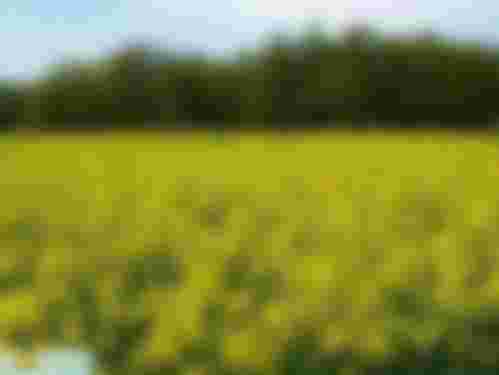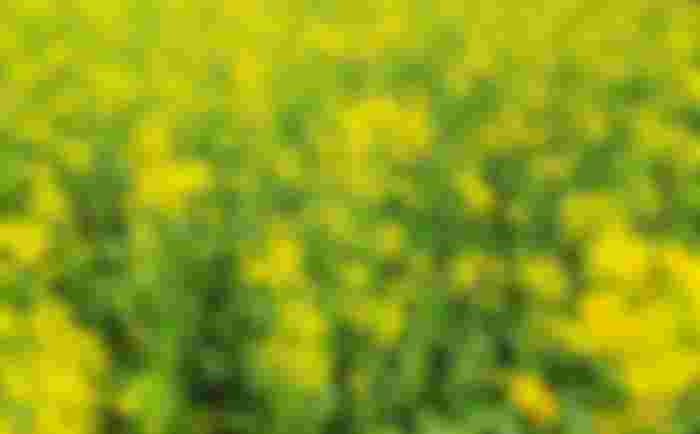Mustard cultivation

About 70% of the edible oil in Bangladesh comes from mustard oil and it is the main crop of our edible oil. Different varieties of mustard seeds contain 36-44% oil and the rest 25% khail and 40% meat. This khail is used as a nutritious food for domestic animals. In our country, the yield of mustard per hectare is 600-725 kg. Yield may be higher or lower depending on the region of the country. The amount of land under oil seed production in Bangladesh is about 540,000 hectares. However, the amount of land suitable for oil seed cultivation is about 10 lakh 50 thousand hectares. Potential average production is 1.5 to 2.0 tons per hectare. Mustard can be cultivated in different parts of Bangladesh now or after removal of transplanted aman or sown aman crop.
Varieties without mustard
The maximum yield of successful and leading varieties is 2.4 to 2.8 tons per hectare. Compared to other conventional varieties, the successful and pioneering trees are thick and strong. Trees do not fall to the ground easily. Alternaria disease tolerant.
Cultivation method

Land and soil
Successful and pioneering mustard is good in clay loam, sandy loam and loamy soils. However, there should be a facility to remove water in this land.
Time of seed sowing
Seeds should be sown between the last week of October and the first week of November. However, sowing can be done till November 15.
Land ready
After Joe comes to the land, seeds have to be sown with 4-6 cultivations and ladders depending on the type of soil. If there is lack of sap in the soil, light irrigation should be given before sowing the seeds.
Fertilizer application
The amount of fertilizer per hectare is given in the table. The yield can be up to 2500. Care should be taken along with the application of fertilizers.
Amount of Fertilizer Nomination (kg / ha) Viria265-260 kgTSP165-160 kgmur of Potash 50-65 kgGipsam 250-290 kg
Applying sulfur (gypsum) in mustard land can increase the production up to 40%.
Fertilizer application and irrigation sequence kg / ha
Land preparation takes 5-40 days and 40-60 days
Fertilizer Name Fertilizer application time
The full amount of organic fertilizer
Urea 135 135
The full amount of TSP
The full amount of MP
The full amount of gypsum
If there is a deficit
Borax 5 (spray) 5 (spray)
Dolochun 300
Molybdenum 1 (spray) (spray)
Water irrigation is second to first
Half the amount of urea and all the TSP, MP and gypsum fertilizers should be mixed well with the soil during land preparation.
The remaining half of urea should be sprayed 35-40 days after sowing when the seedlings start flowering.
In the morning there is dew on the tree.
Seed sowing method
1. Seeds can be sown by sowing or in rows. When sowing in rows, cut the ditch with a plow and put the seeds in the hole and cover it well with soil.
2. Row to row distance should be maintained at 20-25 cm and row to row should be maintained at 4-5 cm.
3. If seeds are sown by scattering, the seeds should be well covered with a ladder.
4. If the tree is too dense, it should be thinned.
The amount of seeds
Scatter sowing 6.0-6.0 kg / ha
Sowing in rows is 4-6 kg / ha
If weeds appear in the land, weeding should be done within 20-25 days of seed germination.
Water irrigation

Irrigation within 35-40 days of seedling growth gives good yield. In the northern part of the country, irrigation is required one after 20-25 days of sowing and then another after 20-25 days.
Insect control
Mustard seeds should be treated with Bavistin (2.5 gm) or Benlet (1.5 gm). Diathene M45 or Roveral should be sprayed in case of Alternaria disease. After flowering, spray twice every 15 days.
Yield decreases when Jab insects attack. This insect attacks when twenty flowers start coming. In this case Dimecron 100 cc or Malathion 56 EC etc. pesticides should be applied.
Bees in pollination
Bees help pollinate mustard plants and increase yields. So from morning till noon mustard flowers are flown by bees to collect honey.
Harvesting
Mustard trees should be harvested when the fruit is silica yellow. If the soil is soft, it can be uprooted by pulling the roots of the tree. Otherwise the root of the tree should be cut off from the surface of the soil. Then the seeds should be stored in the sun for 4-5 days.
Use of boron fertilizer in mustard cultivation
Mustard is the second most important edible oil in Bangladesh after soybean. However, mustard cultivation is the main oil crop in Bangladesh. Mustard is cultivated in about three and a half lakh hectares of land every year. From which about two and a half lakh tons of mustard seeds are produced. Its average yield per hectare is about 640 kg. Which can be further enhanced through the use of advanced technology.
The advanced techniques here are the use of Ufshi variety, adoption of various techniques during and after sowing and following balanced doses of fertilizer application and use of boron fertilizer. The use of boron fertilizer in mustard cultivation increases the yield by 198-230 percent. For this, it is possible to earn additional Tk 6-7 thousand by spending only 120-150 rupees per hectare.
Mustard sand is good in loamy soils. However, mustard is also grown in sandy or loamy soils. Since after irrigating the sandy type of soil, the water leaks down and at this time some foodstuffs also go down with the water. Boron is one of them.
Mustard cultivation requires a lot of sun, low temperature and adequate sap in the soil. As the temperature rises and there is a lack of sap in the soil, the size of the seed becomes smaller and the amount of oil in the seed decreases. Therefore, mustard is cultivated in Bangladesh during Rabi season. Mustard sowing time from mid-Kartik to first week of Agrahayan month (first to mid-November). Since mustard seeds are small, the land has to be prepared by cultivating the soil with 4-6 cultivators and ladders. It is necessary to keep an eye on the land so that there are no large soil lumps and weeds. Mustard seeds can be sown both in rows and sprinkled. When weaving in rows, the distance from row to row is 30 cm. And the seeds have to be sown one after the other in rows. Small wooden plows can be used, with which the soil is two and a half to three cm. The seeds are sown deep and covered with soil. After the last cultivation, the land has to be leveled by sowing the seeds. Soil or ash can be mixed with mustard seeds to facilitate sowing.

It is important to ensure that there is no shortage of juice in the mustard field. The first time before flowering or 22-25 days of germination, the second time at the time of shoots or 50-55 days and the time of germination of shoots or 60-65 days, the soil must have sap, i.e. irrigation should be given if necessary. Mustard lands are usually irrigated by flood method, but care should be taken to ensure that water does not accumulate in the land. As soon as Joe comes after irrigation, he has to break the soil with a hoe and loosen it. Excess seedlings and weeds should be removed by weeding for the first time 10-12 days after seedling emergence and for the second time after 18-20 days.
Fertilizer application in mustard lands may vary according to the variety, soil, location (agro-ecological zone) and soil sap. Urea 6-72 kg per acre, TSP 54-55 kg, MOP 25-30 kg, gypsum 90-95 kg, zinc oxide 0-2 kg and boron (boric acid) 1-1.5 kg per acre. Boron fertilizer should be dissolved in water and sprayed. When mixed with water, half the prescribed amount of fertilizer is required. For this boron fertilizer can be sprayed 2-3 times in 10-15 days. Boron fertilizer can be applied directly to the soil. In that case TSP, MOP, gypsum, zinc oxide and boron fertilizers and half of urea have to be applied to the soil during the last cultivation. The rest of the urea plant needs to be irrigated once by applying top dressing when it flowers. When boron fertilizer is used properly in mustard cultivation, the grains of mustard become bigger and more and the yield also increases.



Mustard is the second most important edible oil in Bangladesh after soybean. However, mustard cultivation is the main oil crop in Bangladesh. Mustard is cultivated in about three and a half lakh hectares of land every year. From which about two and a half lakh tons of mustard seeds are produced. Its average yield per hectare is about 640 kg. Which can be further enhanced through the use of advanced technology.